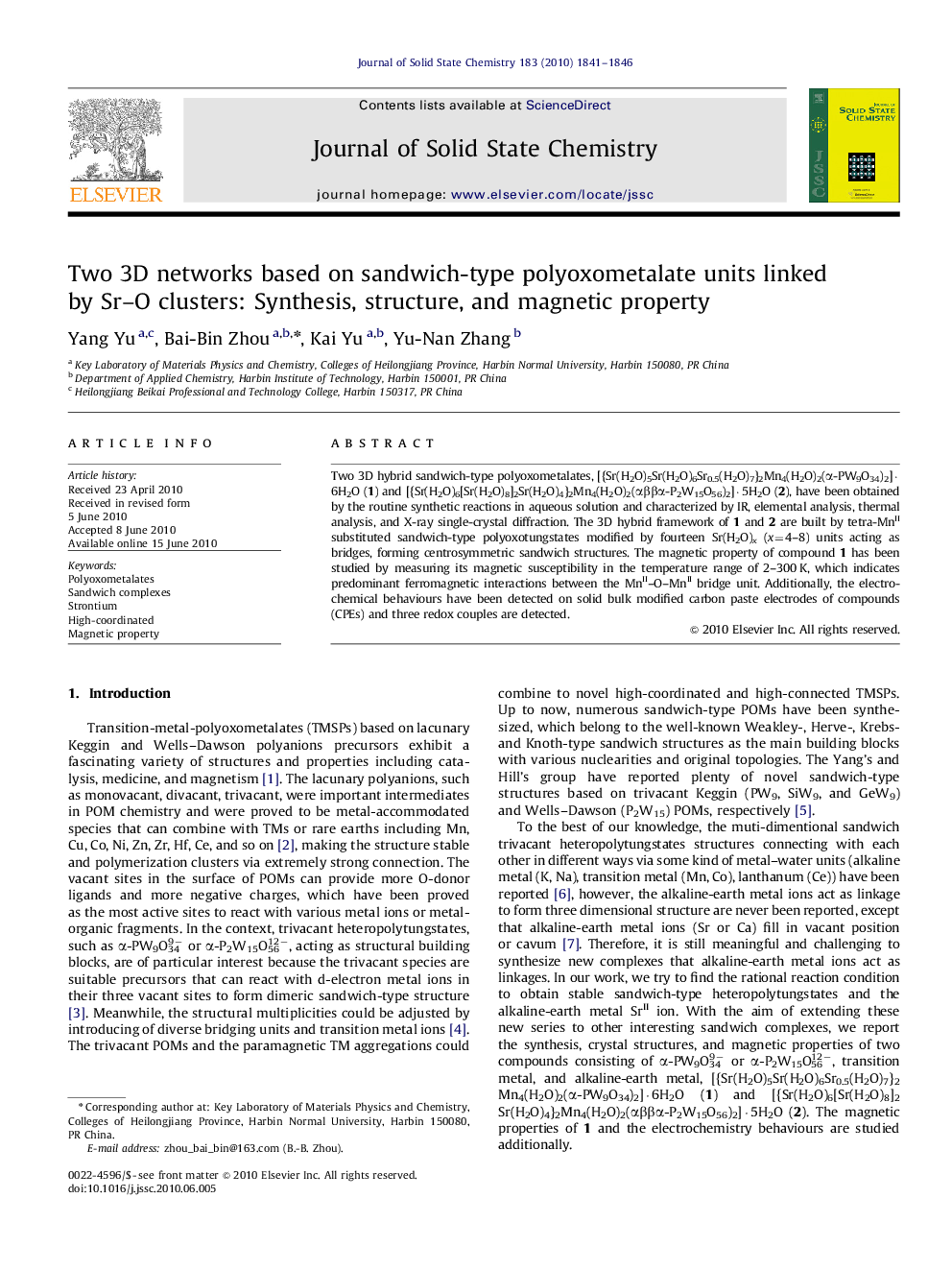| Article ID | Journal | Published Year | Pages | File Type |
|---|---|---|---|---|
| 1333388 | Journal of Solid State Chemistry | 2010 | 6 Pages |
Two 3D hybrid sandwich-type polyoxometalates, [{Sr(H2O)5Sr(H2O)6Sr0.5(H2O)7}2Mn4(H2O)2(α-PW9O34)2]·6H2O (1) and [{Sr(H2O)6[Sr(H2O)8]2Sr(H2O)4}2Mn4(H2O)2(αββα-P2W15O56)2]·5H2O (2), have been obtained by the routine synthetic reactions in aqueous solution and characterized by IR, elemental analysis, thermal analysis, and X-ray single-crystal diffraction. The 3D hybrid framework of 1 and 2 are built by tetra-MnII substituted sandwich-type polyoxotungstates modified by fourteen Sr(H2O)x (x=4–8) units acting as bridges, forming centrosymmetric sandwich structures. The magnetic property of compound 1 has been studied by measuring its magnetic susceptibility in the temperature range of 2–300 K, which indicates predominant ferromagnetic interactions between the MnII–O–MnII bridge unit. Additionally, the electrochemical behaviours have been detected on solid bulk modified carbon paste electrodes of compounds (CPEs) and three redox couples are detected.
Graphical abstractTwo compounds based on Keggin(a) and Wells–Dawson(b) polyoxometalates modified by 14 Sr–O clusters.Figure optionsDownload full-size imageDownload as PowerPoint slide
